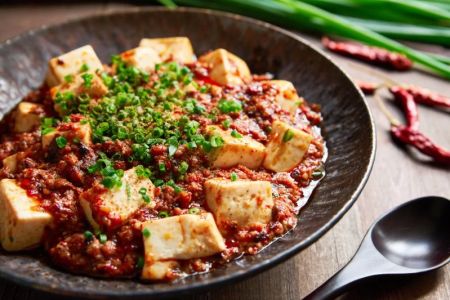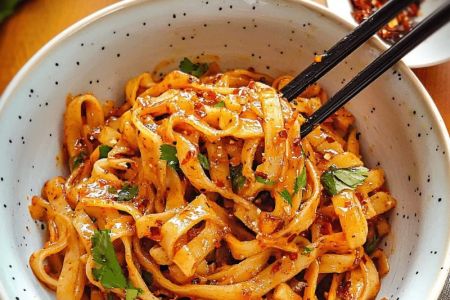Understanding the Diversity of Asian Cuisine
Asian cuisine is one of the most diverse and rich in the world, spanning vast cultures, regions, and traditions. From the vibrant street food of Thailand to the sophisticated sushi of Japan and the fiery curries of India, the variety of flavors, techniques, and ingredients are nearly limitless. But a common question that many people ask when encountering the vast array of food from Asian cultures is: why do Asians eat everything?
This question often stems from the fact that many Asian cultures have a seemingly fearless approach to food. In these cultures, it’s not uncommon to see dishes featuring exotic ingredients such as insects, unusual meats, and vibrant vegetables that many Western cultures might find unconventional or unusual. However, there’s much more to this phenomenon than meets the eye. The wide variety of foods consumed across Asia is deeply rooted in history, culture, and geography.
The Role of Geography and Climate in Shaping Asian Foods
One of the primary reasons why Asians eat such a wide variety of foods lies in the geography and climate of the continent. Asia is a vast and diverse landmass, stretching from the Middle East to the Far East, and from the Arctic Circle down to tropical regions. This diverse geography has allowed for the cultivation of a wide array of crops and the domestication of various animals, contributing to a variety of food options across the continent.
In the tropical regions of Southeast Asia, for example, fresh herbs, rice, and tropical fruits like mangoes, coconuts, and papayas are staples in the diet. In contrast, colder regions like Mongolia and northern China have traditionally relied on more hearty dishes made from meat and root vegetables, reflecting the need for food that can endure the colder climates. As a result, Asian cuisines vary significantly based on geography, each with its unique ingredients and flavors.
Cultural Significance of Food in Asia
Food in Asia is not only a necessity for survival but also plays an integral role in the social and cultural fabric of society. In many Asian cultures, food represents more than just sustenance; it is a symbol of community, tradition, and hospitality. Meals are often viewed as an opportunity to gather family and friends together, and the preparation and sharing of food are deeply ingrained in the cultural practices of many Asian countries.
For example, in China, the concept of "yin and yang" is essential in food preparation, with a balance between hot and cold, sweet and sour, or spicy and mild. This philosophy extends to the types of food consumed depending on the time of year, and traditional Chinese medicine views food as a form of healing. In India, food is closely tied to religious practices, with certain foods served during festivals and rituals. Indian cuisine's vast range of spices also ties into the country’s deep historical and cultural connections to Ayurveda, the ancient system of medicine.
In Japan, food has a distinct cultural significance, especially when it comes to presenting dishes in an aesthetically pleasing way. Japanese cuisine, with its emphasis on seasonality, beauty, and simplicity, highlights the cultural values of precision and mindfulness. Such practices reveal how the culture shapes food choices and preferences across the continent.
Historical Factors and Trade Influences on Asian Cuisine
The influence of trade, colonization, and migration has also played a significant role in shaping the diversity of Asian food. The Silk Road, which connected China to Europe and the Middle East, introduced ingredients such as spices, dried fruits, and nuts to many parts of Asia. Similarly, the maritime trade routes in Southeast Asia facilitated the spread of food and culinary techniques across countries, leading to the fusion of local and foreign ingredients.
Colonial history has also had an impact on the development of Asian cuisine. In countries like India and the Philippines, the British, Spanish, and Portuguese brought new food items and cooking methods that have been adopted and incorporated into local cuisines. For example, curry powder, which is now a cornerstone of Indian cuisine, was popularized by the British during colonial rule, but it was adapted to local tastes and became an integral part of Indian food culture.
How Traditional and Modern Asian Cuisine Collide
In recent decades, globalization has further expanded the diversity of Asian food, blending traditional culinary practices with modern influences. In major cities like Tokyo, Hong Kong, and New York, you’ll find restaurants that serve fusion dishes combining Asian ingredients with Western cooking techniques. Sushi burritos and ramen burgers are just a few examples of how Asian cuisine has evolved to meet modern tastes and trends.
Despite these innovations, traditional recipes continue to hold a special place in many Asian cultures. Family-owned restaurants often preserve time-honored recipes passed down through generations, reflecting the deep cultural connection to food. This combination of modern innovation and traditional values makes Asian cuisine incredibly dynamic, continually evolving while maintaining its historical roots.
The Myth of Eating Everything in Asian Cultures
While it’s true that Asian cultures have a reputation for eating a wide range of foods, it’s important to recognize that not all foods are universally embraced. The idea that “Asians eat everything” is a stereotype that oversimplifies the complexity and diversity of Asian cuisine. Like any other culture, preferences vary from region to region and from family to family.
For example, in some parts of China, it is common to consume a variety of meats, including chicken feet, duck tongues, and even snails. However, these foods are not universally consumed across all Chinese communities, nor are they a staple in every Asian culture. Similarly, in Japan, fish and seafood are widely consumed, but there are also many people who follow vegetarian diets due to religious or health reasons. What is considered a delicacy or a standard dish in one country may be completely foreign or even unappetizing in another.
In reality, food preferences in Asia are as diverse as the people themselves, shaped by various cultural, religious, and regional factors.
Exploring the International Popularity of Asian Cuisine
In recent years, Asian cuisine has become increasingly popular worldwide, with dishes like sushi, pho, dim sum, and kimchi gaining international recognition. The global appetite for Asian food reflects a growing interest in diverse flavors and healthy eating. Many people are discovering that Asian cuisine offers a rich variety of ingredients and cooking styles that cater to different dietary preferences, whether vegan, gluten-free, or low-carb.
This international popularity has led to a surge in the opening of Asian restaurants around the world, bringing authentic regional dishes to global audiences. Additionally, Asian food has become a prominent feature in home kitchens, with people experimenting with cooking techniques and ingredients from various parts of Asia. This growing trend highlights the universal appeal of Asian food and the increasing appreciation for its diversity.
Conclusion and Final Thoughts
In conclusion, the question of why Asians eat everything can be better understood through the lens of cultural traditions, geographical influences, and historical factors. While the diversity of Asian cuisine might seem overwhelming to some, it’s a testament to the ingenuity, resourcefulness, and adaptability of the cultures that shape these dishes. The “eating everything” stereotype overlooks the rich complexity of food choices and preferences across Asia, and in reality, there is no single food culture across the continent.
As we continue to explore the flavors and traditions of Asian cuisine, we gain a deeper appreciation for the cultures and histories behind each dish. From street food vendors in Bangkok to five-star restaurants in Tokyo, Asian food offers something for everyone. If you're interested in discovering more about Asian cuisine or want to try some of these delicious dishes, visit [Chinese Food] for recommendations and products that can help bring the flavors of Asia to your home.







